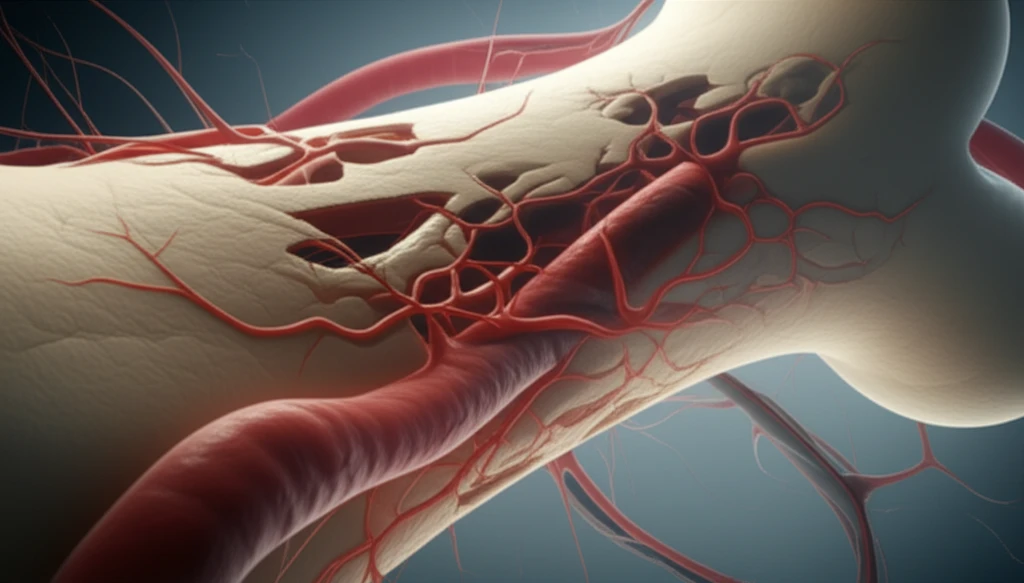
Unlocking the Mystery: Avascular Necrosis and its Link to Behçet's Disease
"Explore the connection between Avascular Necrosis (AVN) and Behçet's Disease (BD), revealing insights into diagnosis, treatment, and prevention."
Avascular necrosis (AVN), also known as osteonecrosis, occurs when bone tissue dies due to a lack of blood supply. While it can affect anyone, certain conditions increase the risk. One such condition is Behçet's disease (BD), a rare disorder causing inflammation of blood vessels throughout the body. The connection between AVN and BD has been an area of increasing research.
Behçet's disease is a chronic, multi-system, vasculitic disorder. It is characterized by recurrent oral ulcers, genital ulcers, and eye inflammation (uveitis). Vascular and central nervous system involvement can also occur, leading to severe organ damage. Corticosteroids, a common treatment for BD, are also a known risk factor for AVN. This creates a complex situation where treatment for one condition can increase the risk of another.
Understanding the clinical characteristics of AVN in BD patients is crucial for early diagnosis and effective management. This article explores a case series and literature review to shed light on the clinical presentation, treatment approaches, and potential risk factors associated with AVN in individuals with Behçet's disease. By examining the available data, we aim to provide valuable insights for patients, caregivers, and healthcare professionals.
What Are the Key Risk Factors for AVN in Behçet's Disease?

Several factors may contribute to the development of AVN in patients with Behçet's disease. These include:
- High Doses: Higher doses of corticosteroids are associated with a greater risk.
- Pulse Therapy: Intravenous pulse steroid administration may further elevate the risk.
- Cumulative Dose: The total amount of corticosteroids taken over time also plays a significant role.
The Road Ahead: Improving AVN Management in Behçet's Disease
While the connection between AVN and Behçet's disease presents challenges, increased awareness and proactive management can improve outcomes. Regular monitoring, early diagnosis, and personalized treatment plans are essential for individuals with BD, especially those at higher risk of developing AVN. By understanding the risk factors and clinical characteristics, patients and healthcare providers can work together to minimize the impact of this complication and enhance the overall quality of life.
